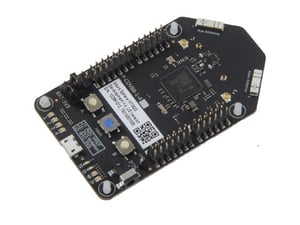Many are searching for an IoT platform to drive business transformation within their enterprise. Real-time data is the key. The IoT marketplace is filled with IoT products that target a narrow vertical market. These limited IoT products are incapable of forming the backbone of a digital transformation strategy at the enterprise level.
A platform approach is needed to ensure the IoT solution meets domain-specific needs. Subject matter experts (SMEs) within an enterprise will typically define their own unique Application Service that the IoT solution will power. For example, if their Application Service is focused on evaluating energy efficiency within a commercial/industrial building, then the SMEs may determine that real-time data from dispersed energy submeters and all critical HVAC equipment (e.g., cooling towers, chillers, AHUs, RTUs, etc.) within the building is needed to drive their custom set of energy efficiency analytics.
The conundrum created is simple. The SMEs uniquely define their specification of required sensor data. As such, the uniquely defined sensor data specification is unlikely to match existing vertical IoT products on the market. More sensor functionality is often needed. Enterprises in such a conundrum are therefore motivated to identify an IoT platform that provides the extensibility they need to support their evolving Application Service.
Here are a few things that enterprises should know when searching for an IoT platform that is capable of driving their real-time Application Service.
An IoT Platform is Not Equal to a Cloud
The existence and success of cloud providers such as AWS, Google Cloud, and Microsoft Azure in IoT have led many to consider a cloud as synonymous with an IoT platform. That is far from the truth. An IoT platform typically includes a cloud service . . . but demands much more. Cloud providers are actively trying to position themselves as an IoT platform. It is an open question as to whether they have succeeded.
An IoT platform provides an ecosystem that supports wide ranging technical requirements defined by using enterprises in accomplishing their particular business transformation goals. IoT platforms can even enable inter-cloud communication via APIs to facilitate collaboration between ecosystem members.
IoT platforms provide a seamless ingestion of real-time data streams from an extensible set of edge devices and sensors into cloud-based frameworks that enable custom analytics and application services such as dashboarding, alerts, notifications, and controls. All of this is done at scale across industry segments, solving a wide range of objectives in producing application-specific operational efficiencies. It is axiomatic that the IoT platform should enable rapid monetization by ecosystem members.
Does the IoT platform address underlying variations in the physical environment?
Again, an IoT platform is more than a cloud. A cloud can exist solely in the software domain and remain disconnected from the IoT device layer. A cloud can implement data ingestion rules to force system integrators to interact with the cloud in a structured way (e.g., ingestion APIs). This architecture produces a top-down hierarchy, which pushes the responsibility for edge device innovation away from the cloud provider to third party developers.
One of those inevitable development challenges is dealing with the underlying variations in the physical environment. While everyone would like protocol standardization at every layer of the technology stack, legacy infrastructure quickly puts an end to that ideal. The underlying variations in the physical environment require adaptability at the edge device level. For example, commercial/industrial buildings have a wide range of devices and systems that vary by manufacturer, communication protocol support, legacy status, etc.
A cloud provider can sit above the fray, unconcerned with the rigors of real-world implementations that interface at the device or sensor level. IoT platforms seek to address these underlying variations in a structured way, bringing uniformity where none exists.
Does the IoT platform focus your attention down-market?
 Someone has to handle IoT device development to account for the underlying variations in the physical environment to extract the needed real-time data set. Would-be IoT platforms have provided development kits that can prototype MCU-based IoT edge devices for use with a cloud provider’s IoT core.
Someone has to handle IoT device development to account for the underlying variations in the physical environment to extract the needed real-time data set. Would-be IoT platforms have provided development kits that can prototype MCU-based IoT edge devices for use with a cloud provider’s IoT core.
Certainly, development kits have utility in enabling a third party to invest time and resources to prototype an IoT edge device suited to their specific application. The problem isn’t the utility, but the necessity. By forcing an enterprise to develop their own custom IoT solution, the enterprise is necessarily focusing their attention down-market. IoT device development is far from their core expertise.
The enterprise would much prefer focusing their attention up-market away from low-margin hardware development towards high-margin Application Services. The question then becomes: To what extent does the IoT platform free its members to rapidly move up-market. The IoT platforms that deliver up-market movement for its members will win handily in the end.
Conclusion
IoT platforms are more than a cloud. They account for underlying variations in the physical environment and shield its members from development and prototyping. The end benefit to its members is a rapid shift up-market for immediate monetization with high-margin Application Services.

